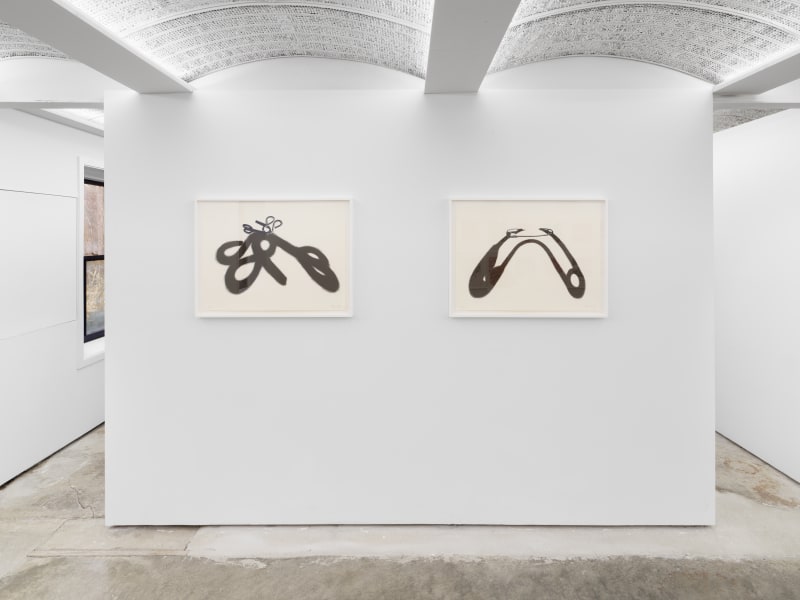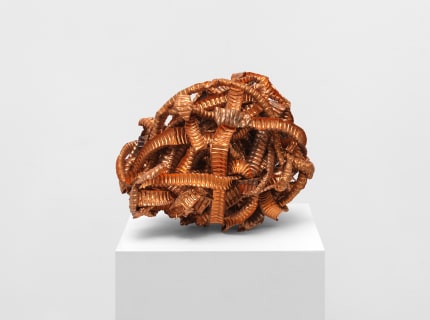Alexander Gray Associates, Germantown presented Between Perception and the World, a two-person exhibition of work by Hassan Sharif (1951–2016) and Regina Silveira (b.1939). Placing these two artists in dialogue, the Gallery’s presentation highlighted Sharif and Silveira’s shared interest in questioning societal structures. The show takes its title from a 2009 statement by Silveira: “[M]y most important concern … is the nature of visual representation, its function and the role (poetic and political) of the image as the intermediary between perception and the world.”
Reacting against the unchecked consumerism of the late twentieth and twenty-first centuries, Hassan Sharif often featured found and locally sourced materials in his work. Installations like Iron No. 2 (2013) make use of salvaged wire coiled around pieces of wood. Combining timber from the Persian Gulf with imported iron, this grid-like work contrasts the two materials to reflect on Dubai’s rapid development from a traditional trading port to an international metropolis. For Sharif, this and other related sculptures—like his series of copper pieces—were about accumulation. As he explained in 2015, “Accumulation becomes important, stacking one thing on the other. It’s like time—the idea that history stacks itself one on another.”
At the same time, Sharif’s works cleverly play with and update the precepts of modernism. The artist once claimed that “… we [have] moved to an era of remaking, rethinking, redoing, and reevaluating.” Through his use of found objects and formal engagement with the modernist grid, Sharif revisited the foundations of contemporary art to question the very ideologies they continue to serve as emblems for.
Like Sharif’s Iron No. 2, Regina Silveira’s Middle Class & Co. (1971) engages in social critique. This set of fifteen silkscreens depicts a crowd constrained and forced into tight configurations. Referencing class struggles and the sociopolitical realities of Brazil in the 1970s as the country was under military rule, the images make an unequivocal political statement. Silveira illustrates the stratification of society—in one composition from the series, she literally divides and stacks groups of people one on top of the other. This pointed critique is further underscored by the silkscreens’ reductive black and red palette and geometric forms, which formally connect the works to Constructivism and the aesthetics of revolution.
Shifting away from overt political messaging, later graphic work by Silveira focuses on the formal and philosophical relationships between reality and perception. The artist’s 2002 Armarinhos series transfigures household objects into abstract forms through wildly skewed shadows. Silveira characterizes these works as “enigmatic,” explaining that they “… serve as indexical signs … [and are] enigmatic because they are marks left by light.” Collapsing the distinction between an object and its image through the play of light and shadow, Silveira’s compositions draw attention to the mutability of perception.
This mutability is at the core of Silveira and Sharif’s art. Just as Silveira’s practice advocates for a constantly evolving understanding of space and representation, so too does the materiality of Sharif’s installations and sculptures draw attention to the shifting physical and cultural landscape of society. Ultimately, both artists’ works embody, to quote Sharif, “… the rhetorical and aesthetic structure unique to the new and contemporary human.”



